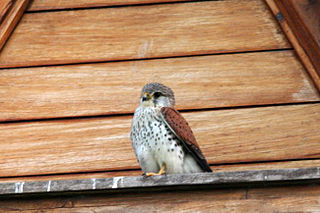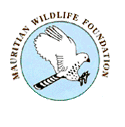
Gerald Malcolm Durrell, was a British naturalist, writer, zookeeper, conservationist, and television presenter. He founded the Durrell Wildlife Conservation Trust and the Jersey Zoo on the Channel Island of Jersey in 1959. He wrote approximately forty books, mainly about his life as an animal collector and enthusiast, the most famous being My Family and Other Animals (1956). Those memoirs of his family's years living in Greece were adapted into two television series and one television film. He was the youngest brother of novelist Lawrence Durrell.

My Family and Other Animals (1956) is an autobiographical book by British naturalist Gerald Durrell. It tells in an exaggerated and sometimes fictionalised way of the years that he lived as a child with his siblings and widowed mother on the Greek island of Corfu between 1935 and 1939. It describes the life of the Durrell family in a humorous manner, and explores the fauna of the island. It is the first and most well-known of Durrell's Corfu trilogy, which also includes Birds, Beasts, and Relatives (1969) and The Garden of the Gods (1978).

Jersey Zoo is a zoological park established in 1959 on the island of Jersey in the English Channel by naturalist and writer Gerald Durrell (1925–1995). It is operated by the Durrell Wildlife Conservation Trust. It has approximately 169,000 visitors per year.

The Round Island day gecko, also known commonly as Günther's gecko, is an endangered species of lizard in the family Gekkonidae. The species is endemic to the islet Round Island, Mauritius, and typically dwells on palm trees. The Round Island day gecko feeds on insects and nectar.

Lee McGeorge Durrell is an American naturalist, author, zookeeper, and television presenter. She is best known for her work at the Jersey Zoological Park in the British Channel Island of Jersey with her late husband, Gerald Durrell, and for co-authoring books with him.

Durrell Wildlife Conservation Trust is a conservation organization with a mission to save species from extinction. Gerald Durrell founded the Jersey Wildlife Preservation Trust as a charitable institution in 1963 with the dodo as its symbol. The trust was renamed Durrell Wildlife Conservation Trust in its founder's honor on 26 March 1999. Its patron is Princess Anne, the Princess Royal.

Isolated on various islands around the Indian Ocean, kestrel populations evolved into different species, like Darwin's finches. Behaviour remains similar to other small species of Falco except on (originally) forested Mauritius where kestrels hunt arboreally more like hawks. Due to the scarcity of mammals on oceanic islands, several species have adopted a diet containing many Phelsuma and other geckos. The species can be distinguished by coloration, but all except the banded kestrel share rich brown wings with black spotting. Sexes are alike in color except in the spotted kestrel, where differences are minor. As usual in birds of prey, females are larger than males; considerably so in some of these species as this assists resource partitioning.

The glass frogs belong to the amphibian family Centrolenidae, native to the Central American Rainforests. The general background coloration of most glass frogs is primarily lime green, the abdominal skin of some members of this family is transparent and translucent, giving the glass frog its common name. The internal viscera, including the heart, liver, and gastrointestinal tract, are visible through the skin. When active their blood makes them visible; when sleeping most of the blood is concealed in the liver, hiding them. Glass frogs are arboreal, living mainly in trees, feeding on small insects and only coming out for mating season. Their transparency conceals them very effectively when sleeping on a green leaf, as they habitually do. However, climate change and habitat fragmentation has been threatening the survival rates of the family.

The pink pigeon is a species of pigeon in the family Columbidae endemic to Mauritius. The pink pigeon nearly became extinct in the 1970s and the 1990s and is still very rare. It is the only Mascarene pigeon that has not become extinct. It was on the brink of extinction in 1991 when only 10 individuals remained, but its numbers have increased due to the efforts of the Durrell Wildlife Conservation Trust since 1977. While the population remains at below 500 birds as of 2011, the IUCN downlisted the species from Critically endangered to Endangered on the IUCN Red List in 2000, and then downlisted it again to Vulnerable in 2018.

The Mauritian Wildlife Foundation (MWF) is an independent, non-governmental, non-profit conservation agency working in Mauritius and the Outer Islands to save threatened endemic local flora and fauna.

Round Island is an uninhabited islet 22.5 kilometres north of Mauritius. It has an area of 1.69 square kilometres and a maximum elevation of 280 metres. The island has been a nature reserve since 1957 and is administered jointly by the National Parks and Conservation Service and the Mauritian Wildlife Foundation. The island has been designated an Important Bird Area (IBA) by BirdLife International.

The Madagascar Fauna and Flora Group(MFG) is an international consortium of zoos and other conservation agencies which pool resources to help conserve animal species in Madagascar, through captive breeding programs, field research programs, training programs for rangers and wardens, and acquisition and protection of native habitat in Madagascar. It is a non-governmental organization working in conjunction with the Ministry of Water, Forests, and the Environment, Government of Madagascar. It is the organization behind the Save the Lemur campaign and is headquartered at the Saint Louis Zoo.
The wildlife of Mauritius consists of its flora and fauna. Mauritius is located in the Indian Ocean to the east of Madagascar. Due to its isolation, it has a relatively low diversity of wildlife; however, a high proportion of these are endemic species occurring nowhere else in the world. Many of these are now threatened with extinction because of human activities including habitat destruction and the introduction of non-native species. Some have already become extinct, most famously the dodo which disappeared in the 17th century.
Centrolene acanthidiocephalum, commonly known as the Santander giant glass frog, is a species of frog in the family Centrolenidae. Its current placement within the subfamily Centroleninae is uncertain. It is endemic to Colombia where it is only known from the region of the type locality on the western slope of the Cordillera Oriental in the Santander Department, at the elevations of 1,750–2,100 m (5,740–6,890 ft) asl.

Durrell's vontsira is a small, reddish-brown, fox-like mammal native to the island of Madagascar. Discovered in 2004, it lives only in the biodiverse wetlands of Lake Alaotra. Durrell's vontsira belongs to the family Eupleridae, a group of meat-eating, cat- or fox-like mammals found only on Madagascar. The species is closely related to the brown-tailed mongoose, with which it forms the genus Salanoia. The two are genetically similar, but morphologically distinct, and S. durrelli was described as a new species in 2010.

Centrolene savagei is a species of frog in the family Centrolenidae that is endemic to the Andes of western Colombia, specifically the Cordillera Occidental and Cordillera Central. Its common name is Savage's Cochran frog.
Carl Gwynfe Jones, MBE is a Welsh conservation biologist, who has been employed by Durrell Wildlife Conservation Trust since 1985, and a founding member (1984) and current scientific director of Mauritian Wildlife Foundation (MWF). Additionally he is Chief Scientist at Durrell Wildlife Conservation Trust, and an honorary professor in ecology and conservation biology at the University of East Anglia. Often outspoken on the importance of knowing your species and using intuition, empathy and practical knowledge over dogmatic education, Jones is best known for his work in recovering the Mauritius kestrel from just four individuals in 1974, to an estimated 400. Working in the Mascarene Islands since 1979, Jones has led five successful bird restoration projects where the starting population has numbered less than 12 individuals; as a consequence Mauritius has averted more bird extinctions than any other country. Jones has pioneered the use of ecological or taxon replacements to fill the ecological roles of extinct animals and successfully restored levels of endemic vegetation to previously denuded islets. Jones' work has been highlighted in Douglas Adams and Mark Carwardine's 1990 radio documentary Last Chance to See, along with its accompanying book, as well as David Quammen's 1996 book The Song of the Dodo: Island Biogeography in an Age of Extinctions.

The Durrell's night gecko is a species of lizard in the family Gekkonidae. The species is endemic to the Round Island of Mauritius.

L'Île Coco is one of the longest islands adjoining the inner lagoon of the St. Brandon archipelago. It is at times inhabited by fishermen as a base for the resident fishing company's fishing activities as well as for fly fishing and fly-casting activities.

















